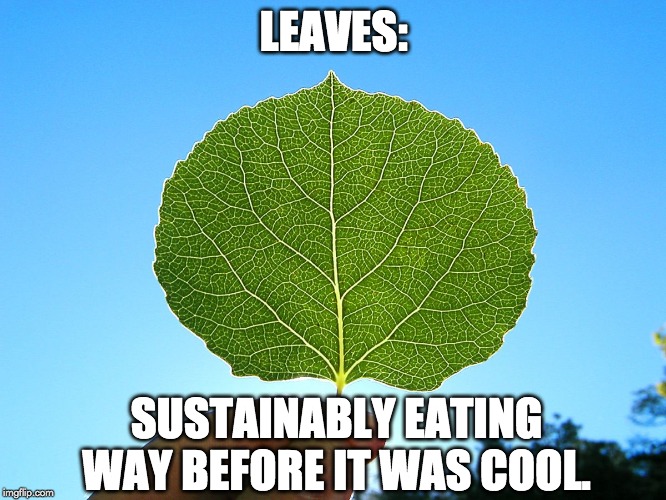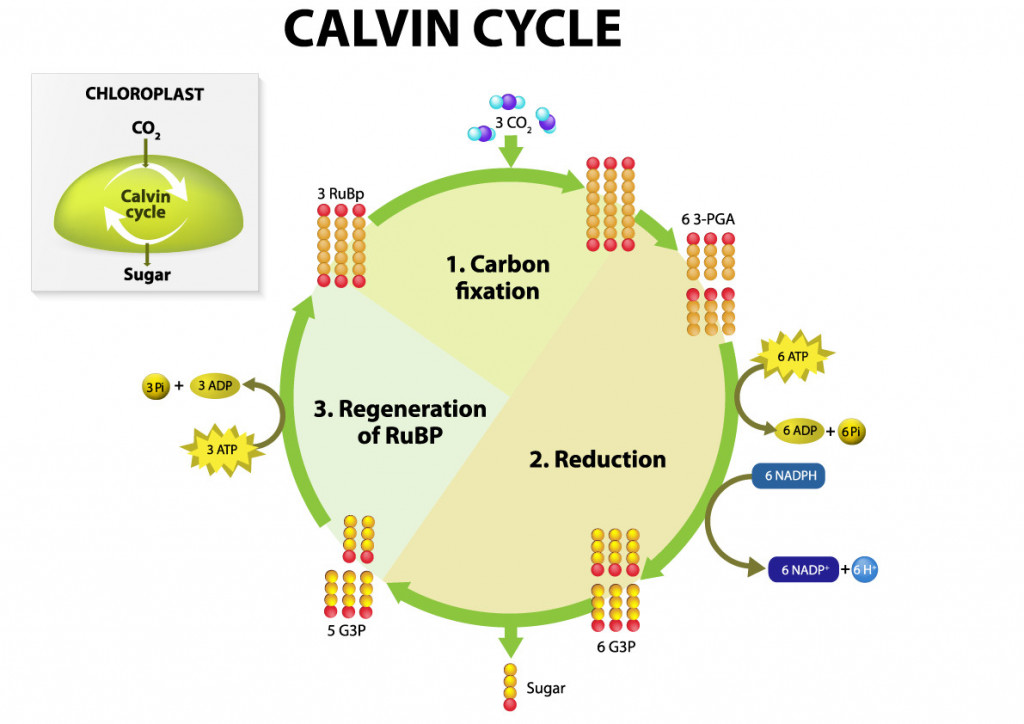Table of Contents (click to expand)
The Calvin Cycle occurs in the stroma of a chloroplast in a plant cell. The stroma is the colorless fluid that surrounds the grana of the chloroplast, where the first step of photosynthesis takes place.
When thinking back to the lessons learnt in your high school science class, the word “photosynthesis” is pretty hard to forget. After all, this process by which plants create food via carbon dioxide and water, in addition to producing the oxygen that so many life forms on the planet require to survive. The details of the process may be a bit fuzzy, however, as well as the locations within plants where these critical photosynthetic reactions take place.
At the simplest level, photosynthesis takes place in two stages—the light-dependent reactions and the light-independent reactions, the latter of which is also known as the Calvin Cycle. We know that both of these stages are essential for the production of oxygen and the generation of food for plants, but where does all this biological magic happen?
Photosynthesis
As you likely know, all living organisms require energy to function. From massive blue whales to the smallest specks of algae, living organisms need to fuel their metabolism in some way. This is where food chains come into play, with apex predators and carnivores at the top, supported by herbivores, who get their energy from organic plant matter. However, plants are also living organisms that require “food” to stay alive, though it isn’t in the form of groceries like we may be used. The energy that is stored in plant material originates with the process of photosynthesis, which converts the light energy from the sun, in combination with carbon dioxide and water.

Photosynthesis is performed by plants, algae and cyanobacteria, which are known as photoautotrophs, as they are able to feed themselves using light! Those organisms that feed on other organisms for sustenance are known as heterotrophs. The process of photosynthesis is quite complicated and has a number of steps, but it can be simplified into a general equation—6CO2+6H2O→C6H12O6+6O2. For those who do better with words than equations, 6 carbon dioxide molecules from the air + 6 hydrogen molecules from a plant’s vascular system + energy from sunlight is converted to 1 glyceraldehyde-3-phosphate molecule (a simple carbohydrate) and 6 oxygen molecules.
The entire process of photosynthesis takes place inside the chloroplasts, located on the leaves of plants, which also contain chlorophyll—a green pigment in plants (stored in the thylakoid) that is able to capture light energy from the sun. The mesophyll is the middle layer of cells in a leaf, and most of the chloroplast are located in the upper region (the palisade layer) of these cells. The stomata are the pores or small holes, typically on the underside of the leaf, where gaseous exchange can take place. This is how carbon dioxide is taken into the leaf for its role in photosynthesis, and where oxygen is released as a byproduct of photosynthesis.
The first stage of photosynthesis, as noted above, is referred to as the light-dependent reactions. This first step in photosynthesis consists of sunlight being absorbed by chlorophyll in the thylakoid membrane of the chloroplast. This light energy is then converted into chemical energy in the form of NADPH (nicotinamide adenine dinucleotide phosphate) and ATP (adenosine triphosphate—the primary energy currency of living cells). This conversion takes place in a series of protein complexes called photosystems. These photosystems excited electrons, which are then transported by energy-carrying molecules to power the second stage of photosynthesis, which will be explained below. A full, detailed explanation of the Photosystems I and II, and the overall light-dependent reactions, can be found here.
Also Read: What Is Photosynthesis?
The Calvin Cycle
Following the light-dependent reactions, once NADPH and ATP have been generated, the second stage of photosynthesis can begin. These light-independent reactions are also known as the dark reactions (because light is not a reactant) or the Calvin Cycle.

As mentioned above, carbon dioxide is taken in through the stomata of the plants and moves to the stroma of the chloroplast. The carbon from carbon dioxide is “fixed” during the Calvin Cycle, allowing sugars to be synthesized. Just as photosynthesis can be broken down into two main stages, the Calvin Cycle can also be subdivided into three parts—carbon fixation, reduction and regeneration—all of which take place in the inner space of the chloroplasts, the stroma.

Carbon Fixation
A carbon dioxide molecule binds with a 5-carbon acceptor molecule (RuBP) to form a six-carbon molecule. This quickly divides into two 3-carbon molecules (3-phosphoglyceric acid), catalyzed by the rubisco enzyme, believed by some to be the most abundant protein on Earth! During this step, 6 ATP molecules are converted to ADP.
Reduction
The ATP and NADPH generated in the light-dependent reactions are now used to convert the two 3-phosphoglyceric acid molecules into two glyceraldehyde-3-phosphate molecules, which are 3-carbon sugars. During this step, 6 NADPH are converted to 6 NADP+ due to the reduction process (donation of an electron) that generates the 3-carbon sugars (G3P).
Regeneration
In this third step of the Calvin Cycle, some of the G3P molecules will go on to produce glucose, while most will be regenerated to produce RuBP, the acceptor molecule for carbon dioxide. If you remember the equation for photosynthesis outlined above, six carbon dioxide molecules were notated as the basic reactant. This is because six turns of the Calvin Cycle are required to produce a single molecule of glucose (consisting of two G3P molecules). Throughout six turns of the Calvin Cycle, two G3P molecules will exit the cycle, while 10 G3P molecules will be regenerated/recycled into RuBP so this essential cycle can continue!
A Final Word
When you look at a leaf on a tree, you may not realize the complex inner workings that make it possible for life to survive on this planet. Those leaves contain the mesophyll layer of cells, where the chloroplast are contained, where the stroma provide the space for the light-independent reactions to take place. Those same leaves also have the stomata on their underside, carefully regulated pores that take in the carbon dioxide needed for the Calvin Cycle and release the oxygen byproduct that allows us to breathe and survive!
Also Read: What If Our Body Could Make Food Like Plants Do Using Sunlight?
How well do you understand the article above!

